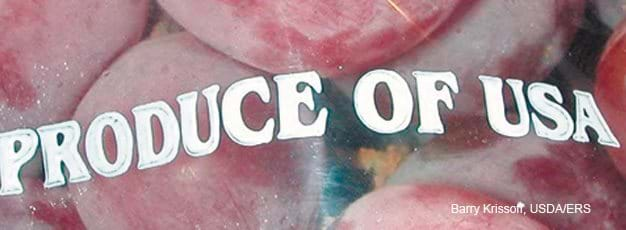Mandatory Country-of-Origin Labeling: Will It Benefit Consumers?

Demands for mandatory country-of-origin labeling (COOL) for some retail food products have sparked considerable controversy. Proponents— primarily some cow-calf producer and fruit and vegetable grower/shipper associations—claim such labels would benefit consumers who are concerned about food safety, who wish to support U.S. producers, or who believe that U.S. foods are of higher quality than imports. Others—cattle feeder and hog finishing operators, meatpackers, processors, and retailers—argue that mandatory labeling will merely raise costs and bring few benefits.
In 2002, Congress incorporated COOL in the Farm Security and Rural Investment Act. Mandatory labeling rules were slated to go into effect by September 30, 2004, but Congress postponed the deadline twice, and COOL is now slated for September 2008. Unless the law is changed, retailers will be required to identify red meats (beef, lamb, and pork), fish and shellfish, fresh and frozen fruit and vegetables, and peanuts as being from the United States, from another country, or from mixed origins. The 4-year delay will apply to meats, produce, and peanuts. COOL has been in effect for farm-raised and wild fish since April 2005 and will not be affected by the delay.
Researchers have tried at least two ways to determine whether benefits of mandatory COOL exceed costs. The first, an engineering approach, requires a calculation of likely expenditures for segregation and recordkeeping—the activities necessary to prove a product’s origin—along with an estimate of what labels are worth to consumers. To estimate value to consumers, some analysts have relied on consumer surveys asking consumers whether they want labels. Such surveys must be carefully designed if they are to reveal consumers’ willingness to pay for labels. The second approach entails drawing inferences about costs and benefits from the actual behavior of suppliers and consumers in the marketplace.
Food manufacturers infrequently label food as “Made in USA.” The absence of such voluntary labeling suggests that suppliers believe consumers either do not care where their food comes from or prefer the imported product. It is also possible that consumers prefer domestic products, but are unwilling to pay higher prices to cover labeling costs. Any of these explanations implies that suppliers believe it is generally not profitable to label.
Some consumers may actually prefer such labels, but this group may be too small for markets to satisfy their demands profitably. In this case, consumers who value the information may be better off with mandatory COOL, depending on how much they are willing to pay for label information and the cost of providing it. Even for these consumers, however, costs could exceed the benefits. For consumers who are indifferent to labels, the higher prices resulting from mandatory COOL would make them unequivocally worse off.
Country-of-Origin Labeling: Theory and Observation, by Barry Krissoff, Fred Kuchler, Kenneth Nelson, Janet Perry, and Agapi Somwaru, USDA, Economic Research Service, January 2004

